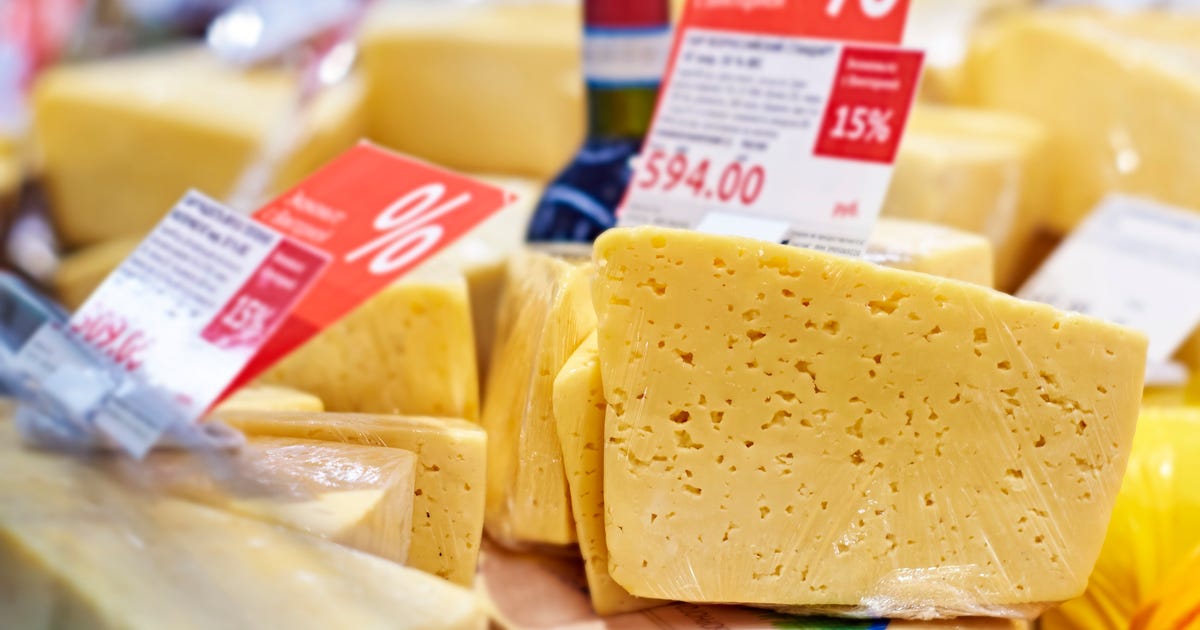
This story is part of Home Tips, CNET’s collection of practical advice for getting the most out of your home, inside and out.
Good cheese, by which we mean, craft (not to be confused with Kraft,) artisanal cheese — that which you may more readily find at a specialty cheese retailer, a farmer’s market or at least the fancy part of the grocery store — of course has a higher price tag than what you’ll come across in shrink-wrapped blocks and bagged shreds in the dairy aisle. “A lot of it is scalability economics,” says Zach Berg, cheesemonger and owner of Detroit’s Mongers’ Provisions. “If you’re talking about a farmstead operation, you have to talk about the cost of raising and feeding the animals, before you even get to the cost of making the cheese in a very different way than a large industrial operation is doing.”

Buying small-scale artisanal cheese then doesn’t just taste better, but feels better, knowing that your extra dollars are supporting smaller or more local operations. This doesn’t mean, however, that all artisanal cheese is the same when it comes to price and that there isn’t great value to be had in the world of fancy cheese, or that you can’t score good cheese for (relatively) cheap. To that end, Berg talks us through some pro strategies for how to save some cheddah on your cheddar…and gruyere, and camembert, etc.
Read more: How to Store Your Cheese so It Lasts Longer
Talk to a cheesemonger
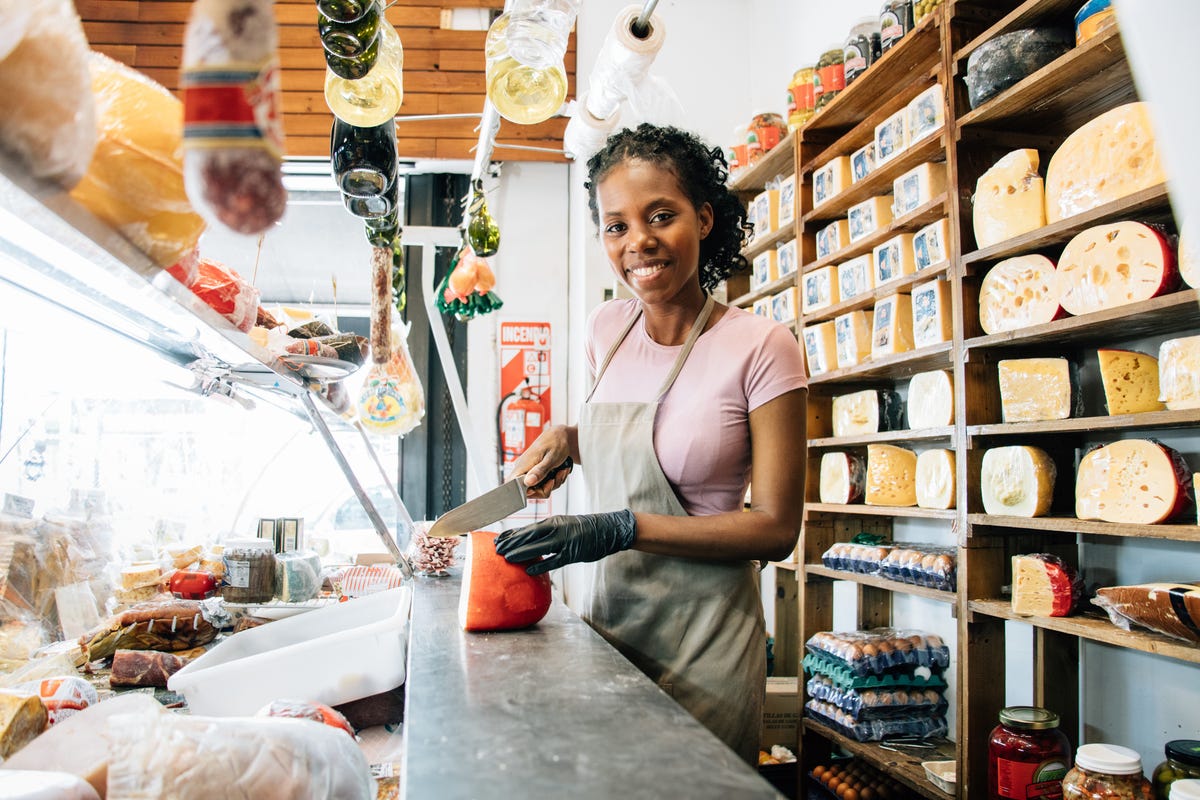
Becoming friendly with your local cheesemonger is very likely to pay off.
ferrantraite/Getty
“Finding a person who you can talk to is step one,” says Berg. “I would think of it as finding an ally.” Like sommeliers, cheesemongers are equipped to help you get the most bang for your buck, wherever your buck stops. If you know you’re planning a cheese plate for a certain number of people, and you want to have a certain number of cheeses, the pros are best equipped to help you get the most and best cheese for your budget.
“Going to places where there’s someone to talk to is always so important for maximizing your dollar,” says Berg. “While Trader Joe’s is amazing, it’s harder to get the most for your money, even though their prices are low.”
In my own experience, all cheese professionals have a (metaphorical) pocketful of cheeses they know customers will love, and that consistently over-deliver for their price. All you have to do is ask. A few that Berg likes include Milton Creamery’s Prairie Breeze, an American cheddar/gouda hybrid, Piave, an Italian, Alpine-style melter, and Fromager d’Affinois: “it’s what people think of when they think brie,” says Berg. The latter qualifies as more of an industrial cheese than an artisanal one, but that’s all the more reason to talk to the pros. “You can still use some larger players that have some of those economies of scale without, you know, selling your soul to the devil or eating bad cheese,” says Berg, who also cites Mitica/Forever Cheese and Hook’s as larger scale dairy operations that can offer lower prices but that still have high-quality products.
Ask about discounts, sales and promotions
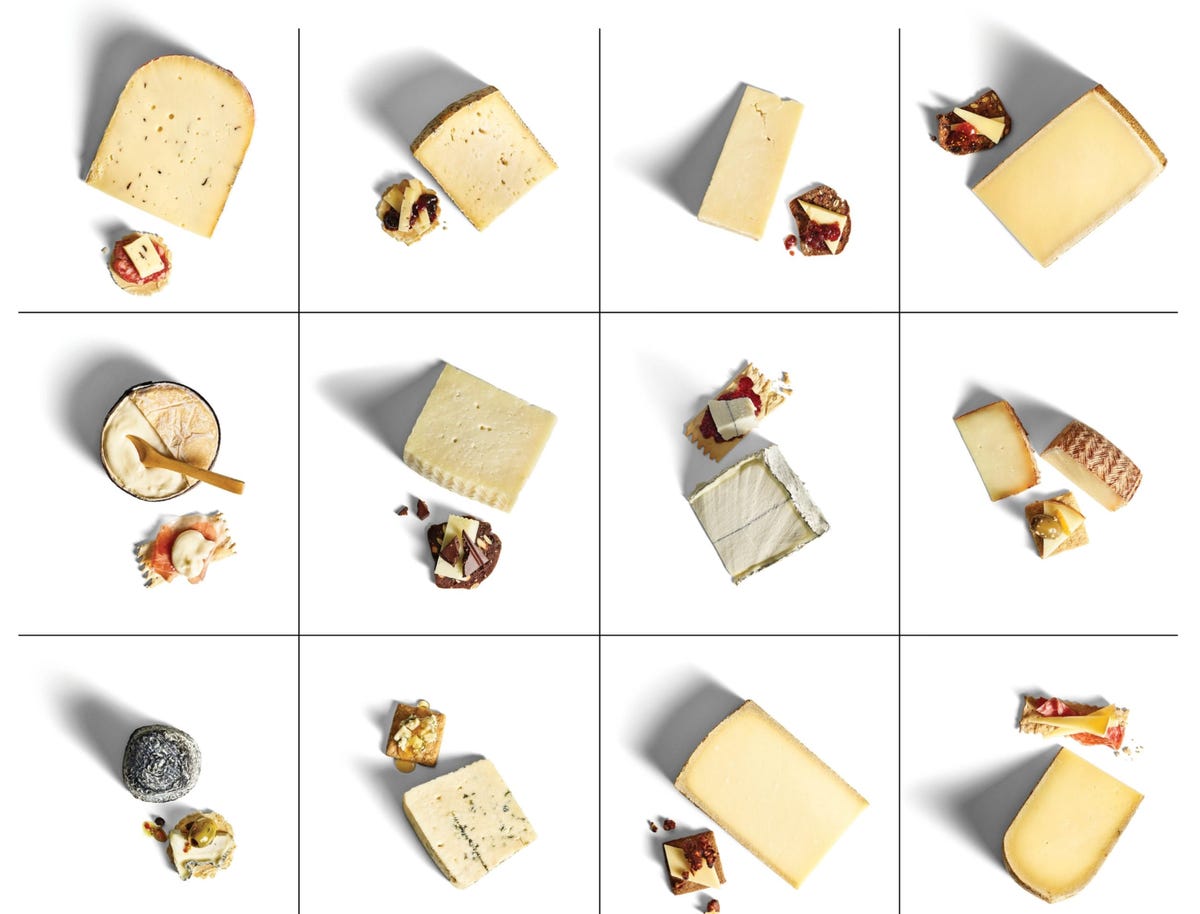
Keep an eye out for promotions such as Whole Foods’ 12 Days of Cheese, which typically happens in December.
Whole Foods
Fancy cheese goes on sale too, sometimes. “We offer discounts when we overbuy, to be perfectly transparent,” says Berg, another reason to befriend a cheesemonger today so they can point you toward the stuff that’s on sale.
“All cheese has a lifespan,” (Note: it’s probably longer than you think though), “and I would much rather you take something home and me not lose all my money than it go into the trash,” says Berg. “Often there’s something that needs a home this weekend, and we’ll offer it at 20% to 50% off, and honestly, it’s a fun way for our customers, especially the adventurous ones, to meet new cheeses, because it feels like it’s less of a risk.”
If there’s nothing on sale that day that interests you, ask about future cheese sales, deals and promotions that might be on the horizon.
Ask for good cheese, bad cuts
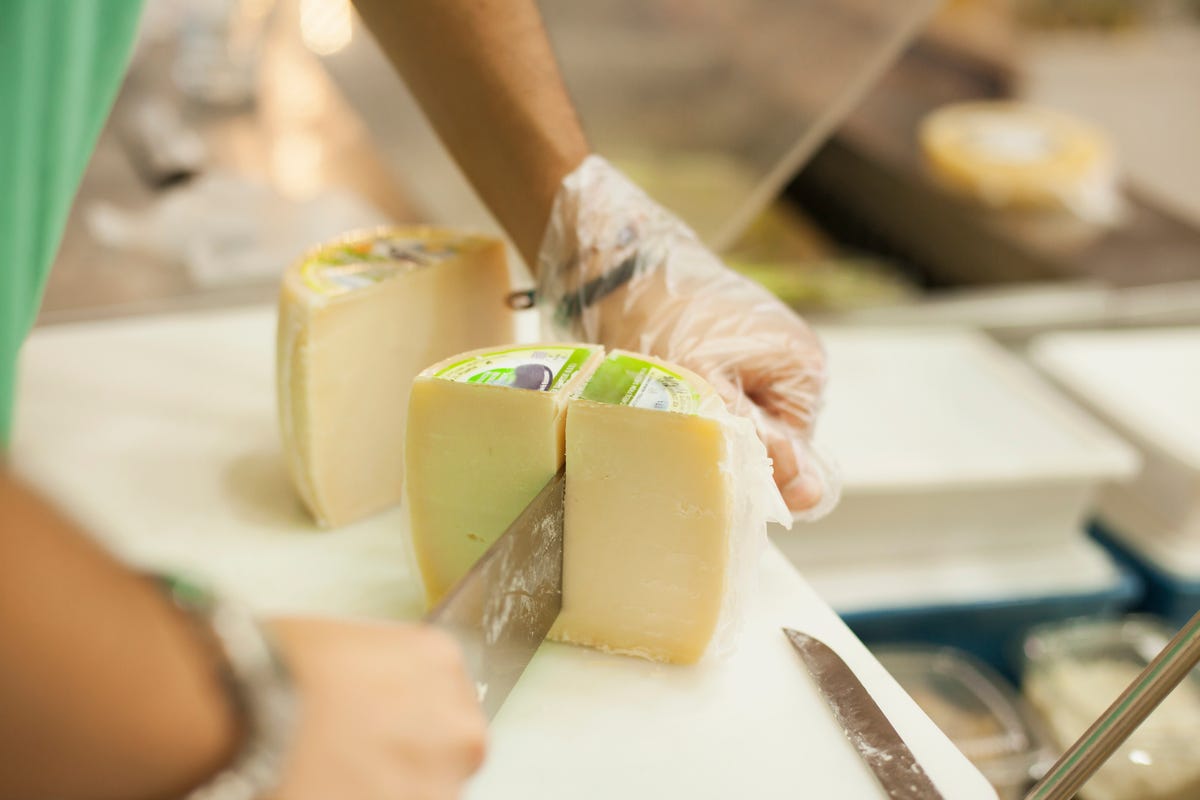
It doesn’t hurt to ask your local cheesemonger about awkward cuts, which are sometimes sold at a discount.
Kathrin Ziegler/Getty Images
Speaking of less financial risk, “we have a ‘good cheese, bad cuts’ bin that we always try to maintain,” says Berg. “It’s always really good cheese,” he says, that may have just gotten weirdly sliced, or is from a small, leftover bit at the end of a larger wheel. These pieces aren’t the elegant wedges you may want to put on an Instagram-worthy cheese board, but in terms of trying out new cheeses for yourself, or putting together an awesome blend of shreds for grilled cheese, mac and cheese, or fondue, those weird little pieces can be a tremendous value.
Even larger retail operations such as Whole Foods, or the Murray’s counters within Kroger stores, frequently maintain selections of smaller or awkward cuts. You can also look out for, or ask about, a discount basket of small pieces at your local grocery store.
Understand cheese metrics
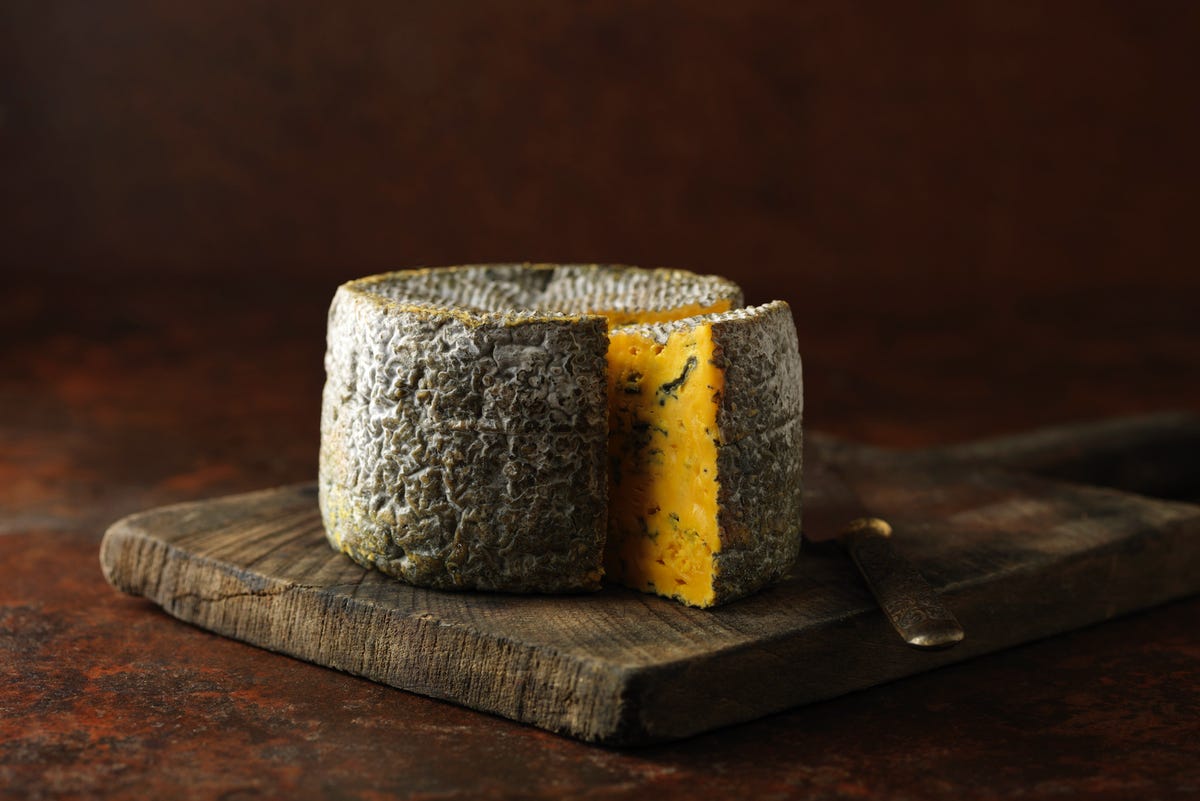
At cheese counters, prices are often given in per-pound figures, which can result in sticker shock if you’re not accustomed to thinking about practical metrics.
Diana Miller/Getty
“I think most consumers don’t usually think in weights and measures when it comes to cheese,” says Berg, especially when they are used to buying industrial cheese by the package rather than the pound. At artisanal cheese counters, prices are often given in pounds (or fractions thereof), which can result in sticker shock if you’re not accustomed to thinking about how much of that $30-per-pound cheese you might actually buy. (I have seen a few retailers combat this by showing their prices by the quarter-pound, however.)
Industrial blocks of cheese — the shrink-wrapped cheddars and colby jacks in your dairy aisle — typically come in 8-ounce portions, or half a pound, so unless you’re planning on a cheese bender over a single weekend or making a cheese plate for an especially large gathering, a normal cut of artisanal cheese for most households is between one-quarter and one-half a pound. So when you look at those per-pound prices, start dividing and save yourself the coronary.
On the other hand, because cheese is already in a suspended state of controlled decay, it has staying power, so if discounts are offered by buying more at one time, know that there’s little reason to expect you’d have to throw any of it away for spoilage reasons if stored correctly.
Store loyalty and subscription programs
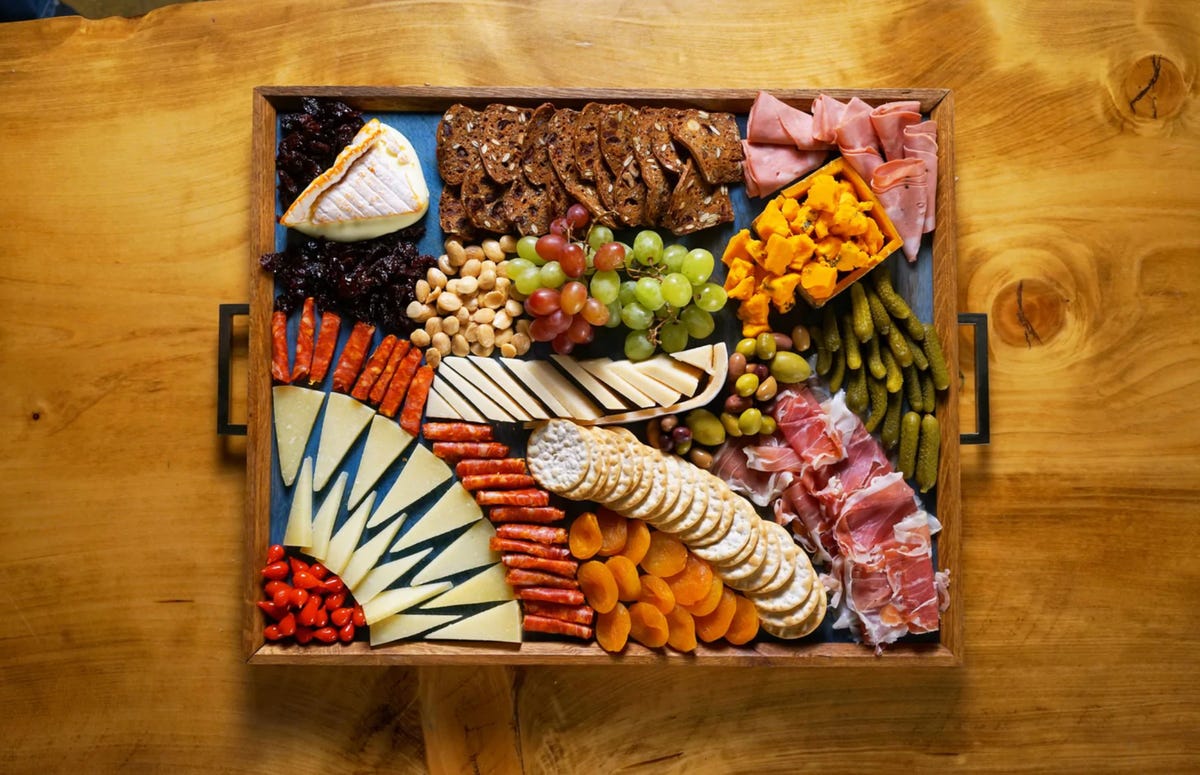
Many of the best cheese shops now offer subscriptions and customer loyalty programs.
Monger’s Provisions
Many cheese retailers offer loyalty or subscription programs, or both, which are also ways to save some money on your fancy cheese needs. If you sign up with Mongers’ Provisions, for instance, you get 2% back for in-store purchases. “It’s a way for us to stay more connected with our customers,” says Berg, “and to let them know that it really means something that anybody spends their dollars with us.”
Cheese subscription boxes from your local stores or creameries may seem like a luxury, but those can also amount to savings, not only of money but also of time. “For people who are farther away from the store, or don’t love to go into a shop every time, our subscription boxes can include discounts, and the more you buy, the cheaper the items become.”
Buy local cheese
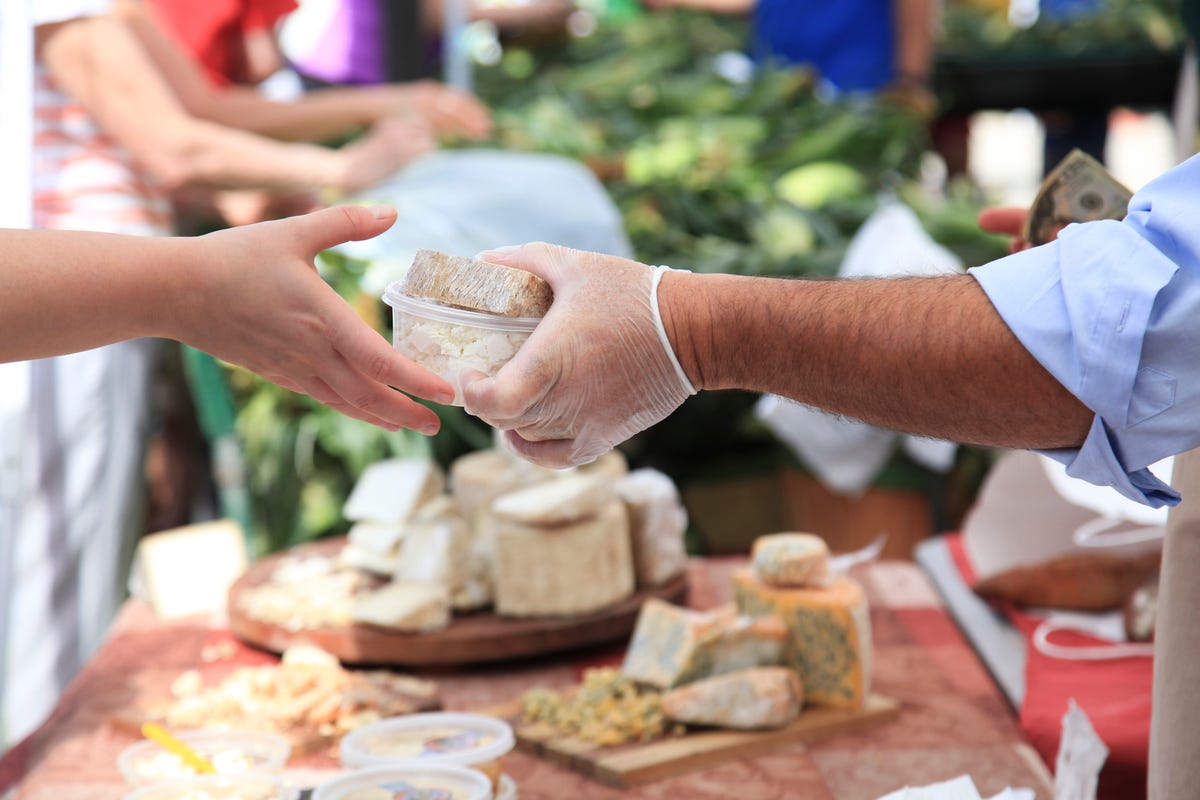
Supporting good, local cheesemakers helps them keep prices low.
phi2/Getty Images
No matter what you’re spending on artisanal cheese, and even if you’re not purchasing directly from a cheesemaker or cheesemonger, shopping locally by getting to know the local brands in your area can deliver value, if not necessarily savings. “Buying local brands delivers great value,” says Berg, “because you’re getting wonderful food, your money is staying in your local economy, and having larger repercussions there.”
On a related note, the little crunchies you often find in aged cheeses are called tyrosine crystals, which aren’t so far off chemically from dopamine. This is to say, when you buy local, artisanal cheese, cheese can feel good for more than one reason.
Looking for more helpful tips and ways to save money this year? We found the cheapest place to buy groceries online and calculated how much you’ll save buying store-brand products.
